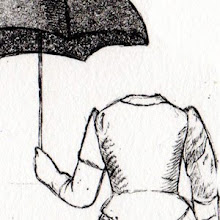Finishing my Design degree at COFA last year brought with it the reality that I was no longer entitled to use their superior printmaking facilities and staff. Since then I have enrolled in a weekly class at the only open studio I could find in Sydney, which is in Manly Vale, 80 minutes public transport away from where I live.
This studio is a 'safe' studio. This means they universally encourage people to use photopolymer (solar) plates which don't use anything more toxic in its etching process than UV rays, water, and photocopying toner; that there is a distinct lack of turps and meth; and that if you must etch metal, you won't find any nitric acid for it.
There are substitutes for this. To clean the ink, we use vegetable oil. Not as fast and efficient, but definitely better for inhaling (oh, and it's edible). For etching zinc we use a mixture of copper sulfate and water.
So far I've worked mostly with aluminum plates, primarily because they are cheap. A zinc plate of the same size generally costs 10 times as much. There is a relatively safe etchant you can mix up at home for aluminum. I wouldn't recommend sticking your fingers in it or drinking it, but at the very least it is unlikely you'll pick up any thrid degree burns from it.
The recipe for aluminum plate etchant:
2 litres cold water
1 cup copper sulfate
1/2 cup salt
1 tbsp sodium bisulfate
You can buy copper sulfate from gardening stores (it's blue) and sodium bisulfate can be found in some powdered toilet cleaners (harpic in Australia).
Shake up the lot in a large container and pour it into a plastic tray. Photographic chemical trays work well. And there you have your etchant!
This post is horribly incomplete and has therefore been updated here.
Here is an excellent, in depth article about copper sulfate etching, by Nik Semenoff.
Thursday, April 1, 2010
Safe etching part 1: aluminum
Labels:
acid subsitute,
aluminum,
copper sulfate,
etchant,
etching,
intaglio,
printmaking,
safe printmaking
Subscribe to:
Post Comments (Atom)

No comments:
Post a Comment